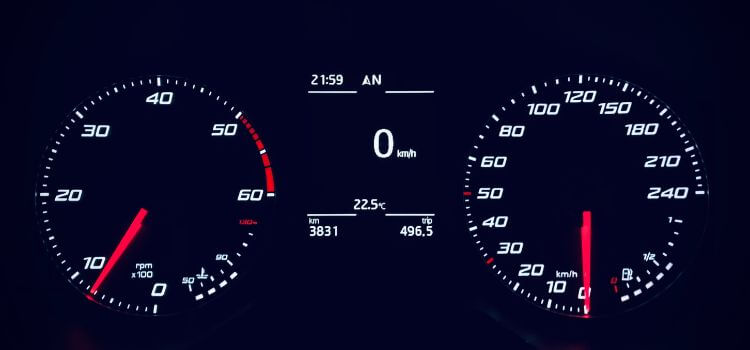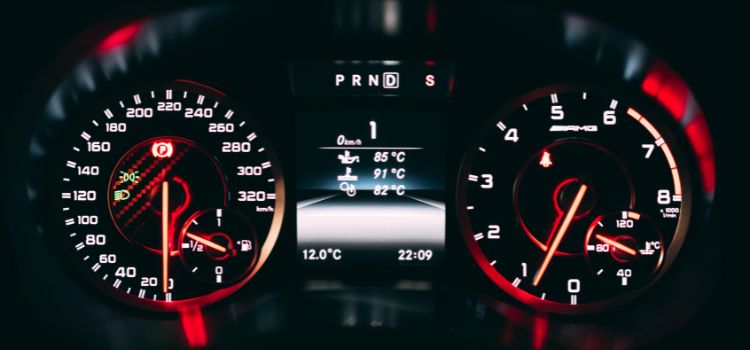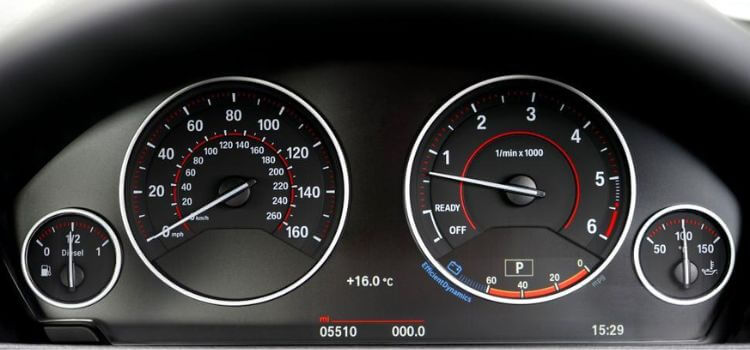As an Amazon Associate, I earn from qualifying purchases
The difference between a tachometer and a speedometer is that a speedometer measures the speed of the vehicle, while a tachometer measures the speed of the engine.
Differences Between Tachometer and Speedometer

When it comes to measuring and displaying speed, two important instruments come into play- the tachometer and the speedometer. Although they both serve the same purpose, there are significant differences between the two. In this post, we will explore the definition, functionality, what they measure, and their placement in vehicles.
Definition And Functionality
The tachometer and speedometer are instruments commonly found in vehicles to monitor speed, but they have distinct roles and functionalities.
What They Measure
The speedometer, as the name suggests, measures and displays the speed of the vehicle. It provides the driver with crucial information about how fast they are traveling.
On the other hand, the tachometer measures the speed of the engine, specifically the revolutions per minute (RPM). It allows the driver to monitor the engine’s performance and provides valuable insights into its functioning.
Placement In Vehicles
The placement of the tachometer and speedometer in vehicles can vary depending on the automobile manufacturer and model. However, there are some common conventions.
In most vehicles, the speedometer is prominently placed on the dashboard, within the line of sight of the driver. It is often displayed in the center or directly behind the steering wheel for easy visibility.
On the other hand, the tachometer is commonly located near the speedometer or integrated into the instrument cluster. Its placement aims to provide the driver with quick access to vital engine information without distracting from monitoring the road.
Overall, understanding the differences between the tachometer and speedometer is essential for both vehicle owners and drivers. While the speedometer focuses on measuring the vehicle’s speed, the tachometer provides insights into engine performance. Their placement in vehicles is carefully designed to provide easy access to essential information during driving.
Choosing The Right Instrument
When it comes to measuring speed, two instruments often come to mind: the tachometer and the speedometer. These devices have distinct functions and purposes, making it essential to understand their differences in order to make an informed choice. In this section, we will delve into the context and purpose of each instrument, their usage in different industries, as well as the pros and cons of each. Read on to discover which instrument is the right fit for your needs.
Context And Purpose
The context and purpose of a tachometer and a speedometer differ based on what they measure. A tachometer is primarily used to measure the speed of an engine, specifically the number of revolutions per minute (RPM). It provides valuable information about the engine’s performance and helps in determining the optimal speed range for different applications.
On the other hand, a speedometer is designed to measure and display the speed of a vehicle, indicating how fast it is moving at any given time. Both instruments play crucial roles in different contexts, and understanding their purposes is essential in choosing the right one for your needs.
Usage In Different Industries
The usage of tachometers and speedometers varies across different industries. Tachometers are widely used in the automotive and aviation sectors, where monitoring engine speed is crucial for performance analysis, maintenance, and safety. They are commonly found in cars, boats, planes, and other vehicles with internal combustion engines.
On the other hand, speedometers are essential components of all vehicles, helping drivers maintain safe and legal speeds on roads and highways. While tachometers focus on the engine, speedometers cater to the needs of drivers and ensure they stay within acceptable speed limits. Understanding the industry-specific usage of these instruments can help you determine which one is more relevant for your application.
Pros And Cons Of Each

Both tachometers and speedometers have their own set of advantages and disadvantages. Let’s take a closer look at the pros and cons of each:
| Tachometer | Speedometer |
|---|---|
|
|
|
|
Considering the pros and cons of each instrument is crucial in making an informed decision. Depending on your specific needs and priorities, you can choose the instrument that aligns with your requirements the most.
Frequently Asked Questions Of Tachometer Vs Speedometer
What Is The Difference Of Speedometer And Tachometer?
Speedometer and tachometer are both used to measure and display speed. However, the speedometer shows the speed of the vehicle, while the tachometer displays the speed of the engine.
What Are Tachometers Used For?
Tachometers are used to measure the rotation speed of a shaft or disk. They show the revolutions per minute (RPM) of a moving object, commonly used in motors and machines. They are found in various industries, including automotive and aviation.
What Is The Difference Between Rpm And Tachometer?
A tachometer measures the engine’s rotation speed in RPM, while a speedometer measures the vehicle’s speed.
What Is The Difference Between Tachometer And Hour Meter?
A tachometer measures the speed of the engine, while an hour meter shows the total hours accumulated.
Conclusion
In the realm of vehicle instrumentation, the debate between a tachometer and a speedometer is a fascinating one. While both instruments share the common goal of measuring speed, they each offer unique insights into different aspects of your driving experience. Picture this: the speedometer, with its clear display, proudly showcases how fast your vehicle is zooming along the road.
Meanwhile, the tachometer quietly but confidently reveals the inner workings of your engine, illustrating its speed and performance. Understanding the nuances between these two crucial gauges is key to maintaining optimal vehicle functionality and performance. So, the next time you glance at your dashboard, remember the tale of the tachometer vs speedometer, and appreciate the vital roles they play in your driving journey.
Read More
1. How to Test a Speedometer Sensor: A step-by-step guide
2. Speedometer Reading Slower Than Actual Speed? Ultimate Guide
3. How to Fix Motorcycle Speedometer: Expert Tips and Tricks
4. Best Bike Computers 2024: Upgrade Your Riding Experience With These Top Picks!
As an Amazon Associate, I earn from qualifying purchases

